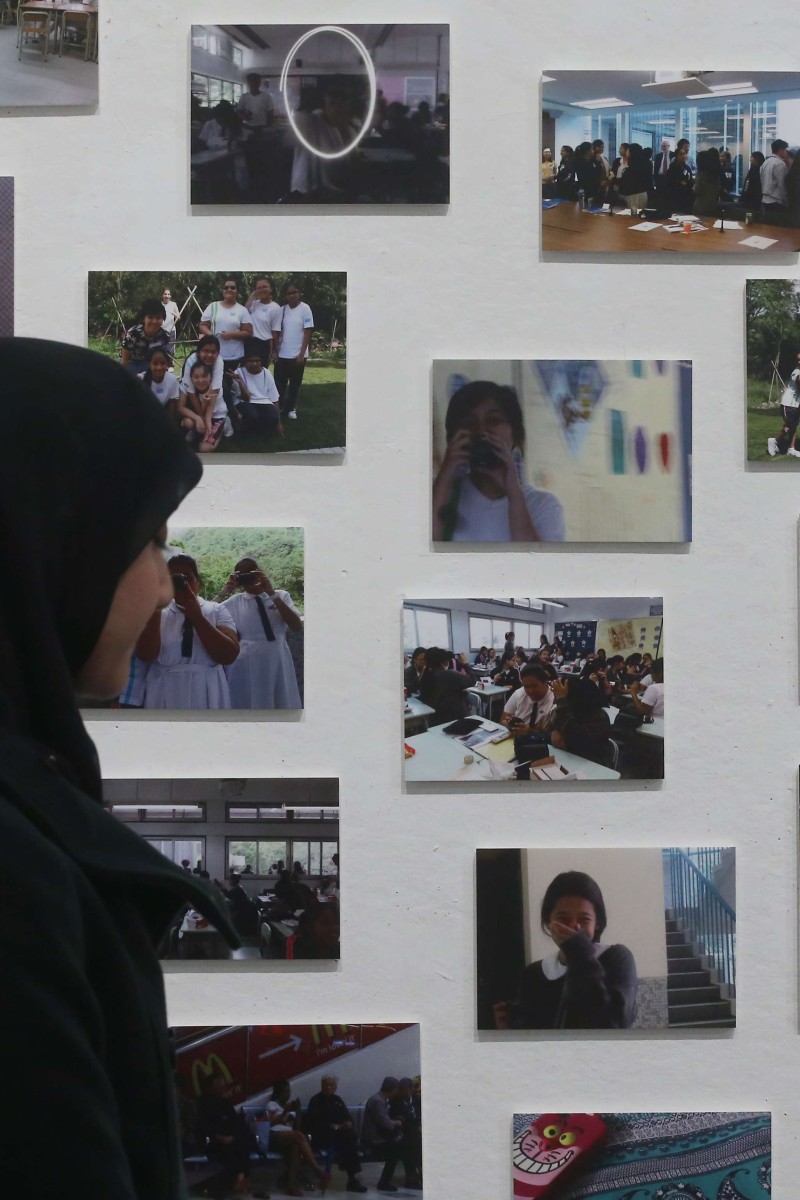
In HK, we’re better when we’re together than when we're separated by differences
A city with as many nationalities, ethnicities and cultures as Hong Kong shouldn’t be this divided. Let’s learn to get along!
 A woman wearing a hijab walks by a photo exhibit on ethnicity at the Jockey Club Creative Arts Centre in Shek Kip Mei. Hong Kong has many ethnic groups, which sometimes can cause tension.
A woman wearing a hijab walks by a photo exhibit on ethnicity at the Jockey Club Creative Arts Centre in Shek Kip Mei. Hong Kong has many ethnic groups, which sometimes can cause tension. Hong Kong prides itself as an international city, but many Hongkongers’ behaviour seems to be at odds with this reputation. Many locals, or ethnically Chinese residents, are hostile to ethnic minorities residents of the city. Though subtle, the discrimination is undeniable and can be found in all areas of life.
Chinese residents make up 95% per cent of the population, meaning five per cent is residents of ethnic minorities. The percentage seems small but it equates to 700,000 people. Despite the large population, ethnic minorities have hardly any influence here, or worse, they are not even integrated into Hong Kong as if some sort of invisible barricade lies between the two groups of people.
The recent government campaign, Appreciate Hong Kong, perfectly demonstrates society’s divisions by having different versions for different languages. It’s an ironic attempt to strengthen bonding between Hongkongers of different ethnicities, is yet only highlights the racial gap it aims to close.
Ethnic minorities don’t have the same political involvement. It is not hard to notice the lack of participation of non-Chinese in political affairs. It’s good to see Carrie Lam encouraging minorities to join in with politics, but much still has to be done to bridge the racial gap, especially in schools.
The current education system is flawed as it deters communication between Chinese and non-Chinese. A lack of support government support discourages non-Cantonese speakers from learning, and classes taught in schools don’t equip people with the language skills for daily life.
On the other side, ethnic Chinese refusing to communicate is another cause for this poor bonding. One reason for this is the misconception or labelling of ethnic minority. Terms like “Gweilo” for white people and “Ah Cha” for black people singles out minorities by highlighting racial differences. The racial prejudice leads us to misconception that deters further communication.
Some Hongkongers won’t speak to people they see as outsiders merely because the thought of ethnic minority only speaks English or they are violent and impolite. While the reluctance of ethnic Chinese to speak English is another cause of the lack of communication, these misconceptions prevent us from understanding them as we judge before actually making the effort to understand them.
This gap begins at school, where ethnic groups tend to segregate themselves based on language and culture. The choice of schools in HK is very limited for a student who does not speak Cantonese, especially for families who cannot afford international schools.
It is naive to have big dreams for Hong Kong if the city is divided into defined groups that refuse to communicate. To make our city great, we need to work as one and be proud of our cultural melting pot.
“Hongkonger” is an identity irrespective of ethnicity. Let our actions speak louder than our words.